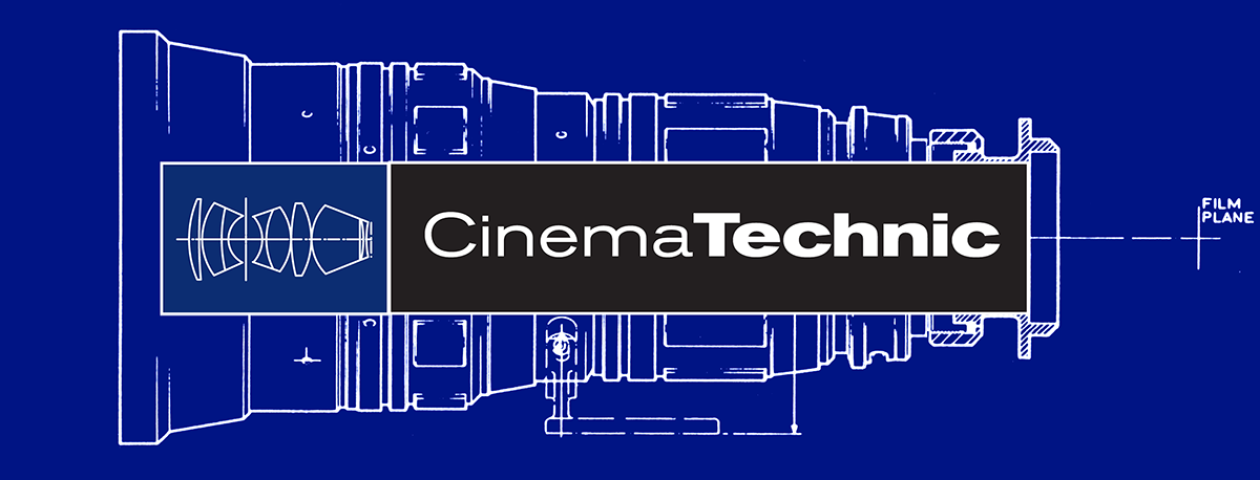
CinemaTechnic is pleased to announce our Video Upgrade for the Richter R-2 Collimators. The photo above shows the prototype unit during testing. The first production unit has been sold.
The Problem
One of the most frequent requests we get from customers of our Richter Cine collimator upgrades is for a better eyepiece. Until now, Richter collimator users needed to bend down and push their eye sockets uncomfortably against a small rigid plastic eyepiece in order to see the image. The quality of the magnified image was poor.
Unfortunately, the design of the Richter R-2 complicates finding a replacement eyepiece. The R-2 requires a very compact and high power eyepiece.
Our Solution
We replace the original eyepiece with a modern achromatic eyepiece design. The new eyepiece has modern multi-coated optics. We modify the R-2 collimator block to accommodate a custom housing that allows the new eyepiece to be used.
The new eyepiece is superior to the original in every respect except magnification, which is slightly lower. It has higher resolution, a wider field of view and much better eye relief. Even without the HD video relay, it is easier to see the collimator image with this eyepiece.
When coupled with our high-resolution video relay lens, the Richter collimator image is highly magnified without loss of image quality. It can be comfortably viewed on a monitor.
Camera Compatibility
Our optics are compatible with up to 2/3” single chip C-Mount cameras, up to 3k horizontal resolution. We recommend 1080P or 2k cameras as having enough resolution for the collimator image. With a 1080P HD 1/2.5” chip camera (as seen above) the image of the reticle fills the screen.
Calibrating back focus on Cine Lenses is much easier when you can view the image on a monitor. This is particularly important with Vintage Cine Lenses which are not very sharp, and with Anamorphic Lenses.
Being able to see the image and the focus scale or micrometer reading at the same time allows you to see the relationship between the two in real time. This is especially helpful with some vintage lenses that have unusual focus characteristics, such as the Bausch & Lomb Super Baltar lenses, Anamorphic lenses or vintage Soviet lens designs such as LOMO.
Calibrating FFD on Digital Cinema Cameras
The ability to see a highly magnified collimator image on an HD screen also makes very accurate adjustment of the Flange Focal Distance (FFD, sometimes incorrectly called “back focus”) of Digital Cinema cameras possible.
You can view the image on the monitor while turning the FFD adjustment screw (on RED cameras, for example) or moving the focus scale on your test lens (for cameras that use shims under the lens mount, such as ARRI cameras). You can easily see where the best focus setting is.
Adjustment of the camera’s FFD with a well calibrated high resoultion test lens is the most accurate method of setting FFD. Accurate setting of FFD on your cameras eliminates complaints from customers using their own improperly calibrated lenses.
Availability
The upgrade is available as an “eyepiece only” version, or complete with the HD video relay. The initial upgrade must be installed at CinemaTechnic as the R-2 block must be modified. The eyepiece only version can be upgraded to the HD video relay version and this can be installed by the user.
We strongly recommend having us service and calibrate your R-2 collimator block while doing the upgrade.
Current production of these units is back-ordered. We will be doing a short production run in the near future, but availability will be limited to units pre-ordered. If you would like to have your Richter Collimator upgraded, please get in touch via email.

Updated 11 February 2020
©2020 CinemaTechnic
